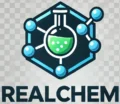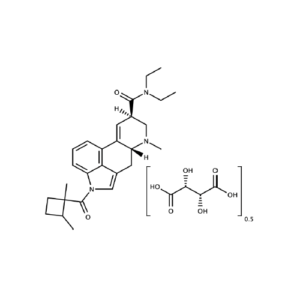1D-LSD
1D-LSD: Lysergamide Research Chemical Profile and Legal Overview
1D-LSD (1-dimethylcyclobutanoyl-lysergic acid diethylamide) is a novel lysergamide used in serotonergic and psychedelic research, structurally related to LSD and other research analogs such as 1P-LSD, 1V-LSD, and 1cP-LSD. This compound is studied for its potential prodrug activity, meaning it may convert into LSD in vivo, though this remains a subject of ongoing investigation.
Due to its structural and pharmacological similarities to LSD, 1D-LSD is of particular interest in receptor-binding studies, neuroscience, and analytical research focused on the serotonin (5-HT2A) system.
Chemical Structure and Classification
-
Full Chemical Name: 1-dimethylcyclobutanoyl-lysergic acid diethylamide
-
Molecular Formula: C25H31N3O2
-
Chemical Class: Lysergamide / Ergoline derivative
-
Appearance: Typically found in blotter or microgram powder form
-
Suggested Applications:
-
Receptor binding affinity studies
-
Prodrug metabolism analysis
-
Pharmacokinetics of lysergamides
-
Comparative psychedelic modeling
-
The presence of a dimethylcyclobutanoyl group at the indole nitrogen distinguishes 1D-LSD from classical LSD and other analogs, possibly altering its rate of conversion and onset in biological systems.
Research Significance
Although no formal toxicological or clinical studies exist, 1D-LSD is believed to act similarly to other LSD prodrugs. It may exhibit comparable binding affinities to serotonin receptors, particularly 5-HT2A, which is central to the study of psychedelic compounds.
Anecdotal research commentary (not peer-reviewed) has proposed:
-
LSD-like behavioral or receptor effects
-
Slight differences in potency or duration
-
Similar safety margins when handled under lab protocols
-
Unique structure for metabolic comparison to other lysergamides
These insights remain unconfirmed and are intended only for scientific discussion, not medical interpretation.
Handling and Laboratory Use
1D-LSD is a potent and active compound at microgram levels. It should only be handled by trained personnel using accurate instrumentation and appropriate laboratory safety protocols.
Lab Safety Guidelines:
-
Use of gloves, goggles, and protective clothing
-
Microgram-precision scale for dosing
-
Storage in cool, dark, and dry environments
-
Restricted access within qualified research facilities
-
Proper chemical waste disposal
Legal Status of 1D-LSD
The legal status of 1D-LSD varies by country and may fall under analogue or psychoactive substance regulations depending on national or regional laws.
-
United States: Unscheduled, but potentially regulated under the Federal Analog Act
-
Germany: 1D-LSD is legal for research use under the NpSG (as of early 2025)
-
United Kingdom: Likely covered by the Psychoactive Substances Act (PSA)
-
Switzerland & Austria: Monitoring for control but not yet explicitly scheduled
-
Other EU States: Legal status may vary — research required per jurisdiction
Researchers must confirm local laws before ordering, importing, or working with 1D-LSD.
For Research Use Only
1D-LSD is not approved for human consumption or clinical use. It is strictly intended for analytical, chemical, and academic research within certified laboratories.
Showing all 3 results



